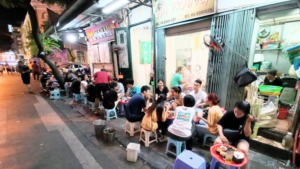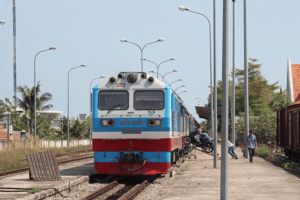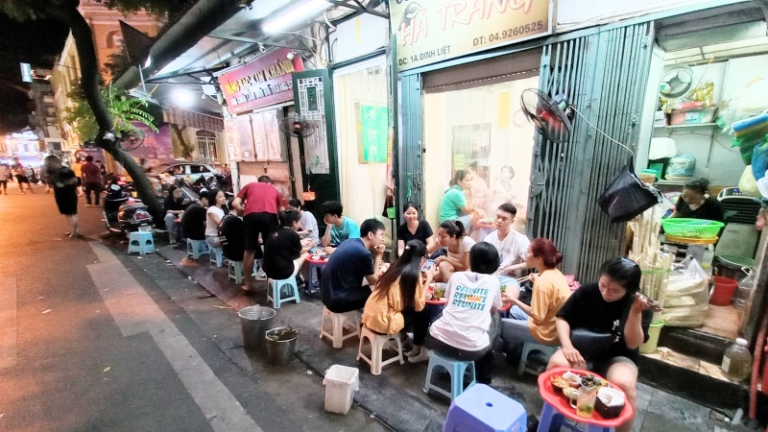The Hanoi Opera House is an architectural beauty that depicts the extent of colonial glory in Hanoi. Kept within the memory of history itself, this landmark is captivating, more than just a performance venue. The Hanoi Opera House is, therefore, a must-see by every lover of adventure, whether of opera or just an art admirer.
Where is the Hanoi Opera House?

Finding the Hanoi Opera House in Vietnam is very easy. It is situated in the heart of Hanoi’s Hoan Kiem District, overlooking the picturesque Square of the August Revolution (Quảng trường Cách mạng Tháng Tám). The address is 1A Trang Tien Street, making it accessible within walking distance from other iconic attractions such as Hoan Kiem Lake and the Vietnam National History Museum.
Learn About the History of the Hanoi Opera House

The Hanoi Opera House is one of the most interesting testimonies to multifaceted history. Conceived as a cultural epicenter during the French colonial period, it was built from 1901 until a decade later. Designed to be a small-scale replica of the famed Paris Opera Garnier, this building symbolizes European elegance in architecture combined in harmony with Vietnamese craftsmanship.
First constructed as a platform to display French culture to the colonial elite, the Opera House changed greatly after Vietnam achieved independence. It became one of the most visible centers for government activities and served as a platform upon which Vietnamese artists could launch their careers. Through the intervening years, it suffered somewhat but remained important enough to undertake a painstaking restoration project in the late 20th century. It shines brightly today, a resplendent cultural institution and one of the city’s most important tourist attractions, offering impressions of an almost indefinable yet captivating past for Hanoi.
Admire the Outstanding Hanoi Opera House’s Architecture
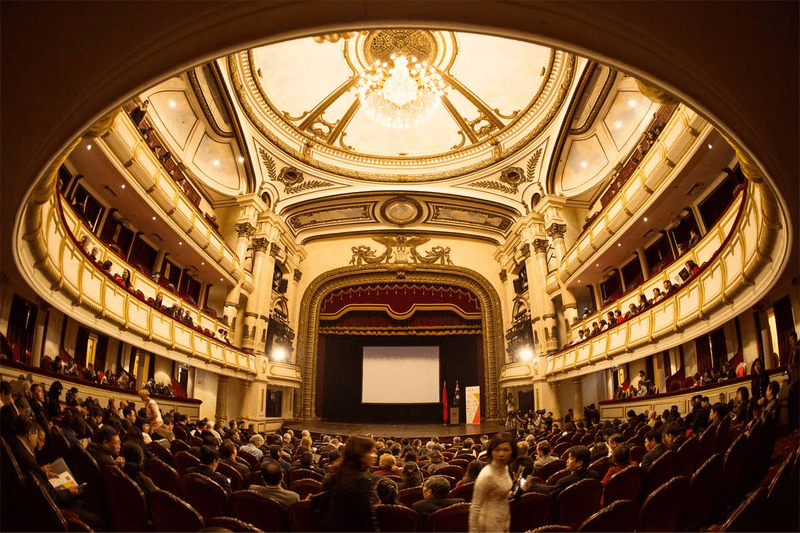
The Hanoi Opera House Vietnam is not just an ordinary building but a masterpiece of architectural fusion. Serving the right place for classical performance like opera, ballet, and chamber music, these classical performances. The Opera House combines harmoniously a few styles of European architecture: Roman Ionic columns are used in the high portico and the dome in a Baroque manner; the Art Nouveau is found in curving balconies and car entrance roofs.
As soon as one steps into it, it whisks them away to the entrance hall of an opulent world. Boasting classical features in every detail, right down to a sweeping T-shaped staircase, this sets high expectations for what lies beyond. The chamber is clad with elite Italian stone tiles in a mirror finish; the lighting is quite elegant and rich with chandeliers.
The performance hall is undoubtedly the heart of the Opera House. Boasting about acoustics that are a work of art in themselves, there is a huge mosaic vault, Corinthian columns, a monumental crystal chandelier, and red plush velvety seats on three tiers: the stage support infrastructure; behind-the-scenes facilities are the result of acute planning toward this architectural wonder.
Read more: Uncover Hanoi’s Soul at Long Bien Market
Tips for Your Visit to the Hanoi Opera House
Planning a trip to the iconic Hanoi Opera House Vietnam? Here are some tips that will ensure your visit is as smooth as possible and enjoyable.
Hanoi Opera House Opening Hours
The Hanoi Opera House Hanoi generally opens its doors to visitors two days a week – on Mondays and Fridays – for about 1.5 hours: between 10:30 and 12:00. But then, all these hours are changeable, as they depend on the management of the Opera House.
Hanoi Opera House Entrance Fee
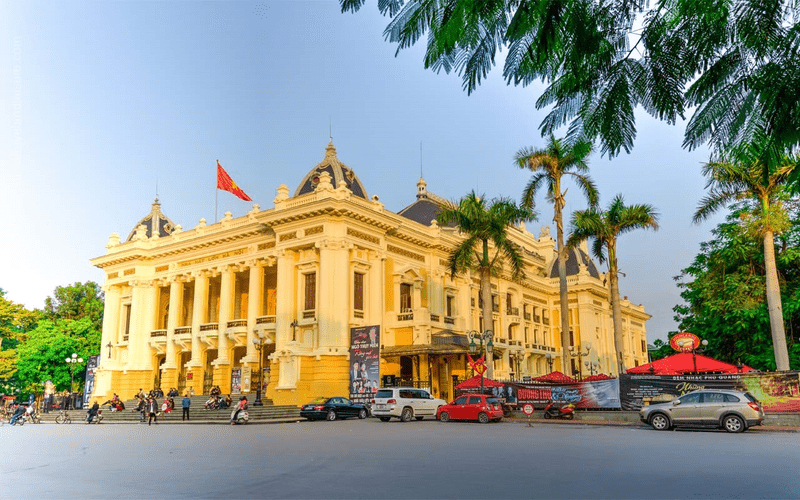
There are two major touring options available:
- Hanoi Opera House Tickets: Tour of 70 minutes with a maximum of 20 persons per tour at VND 120,000 per person (approximately US$4.8). It is available on Mondays, Tuesdays, Wednesdays, Thursdays, Saturdays, and Sundays.
- Hanoi Opera House Tour & Art Show: This is 90 minutes in duration, with an option for a tour and an art show. Maximum capacity: 250 persons. The cost will be VND 400,000 per person. It is available on Monday and Thursday.
Moreover, you can buy separate tickets for art programs at the Opera House, and usually, the price is VND 300,000 per person. If you are a customer of Lily’s Travel, you can freely include the Hanoi Opera House Vietnam in your Hanoi tour. With more than 15 years of operation, Lily’s Travel is getting closer to the mission of bridging the Vietnamese and global culture, making us one of the best tourist agencies for foreigners.
Read more: Imperial Citadel of Thang Long: Hanoi’s Crown Jewel
The Best Way to Travel to The Opera House
Various kinds of transportation can get you to the Hanoi Opera House Hanoi, including:
- Public Bus: The building is served by buses 02, 04, 34, 43, 45, 49, and 86, among others.
- Private Transport: In case you drive by car or motorbike, just drive toward Le Thai To Street and continue through Hang Trong, Hang Khay, and Trang Tien Streets. The Opera House can be found at the roundabout of the August Revolution Square.
- Taxi: Taxis are found everywhere in Hanoi. It is preferable to use ride-sharing apps like Grab, Xanh SM, Mai Linh Taxi, etc.
- Hanoi City Tour Bus: The hop-on, hop-off tourism city double-decker bus could provide a more relaxed feel when seeing the Opera House and other various attractions.
Other Tips to Know
- Dress Code: Although there is no strict dress code, smart casuals should be preferred as a gesture of respect towards the Opera House and its historic significance.
- Photography: Allowed but it is not for commercial purposes, most interior photography with no flash is acceptable at the Opera House; however, it is always good etiquette to ask permission first.
- Respectful Behavior: Keep silence during tours and performances for a nice experience for all.
- Accessibility: The Opera House is still working toward making the establishment more accessible. It’s best to call ahead for disability facilities.
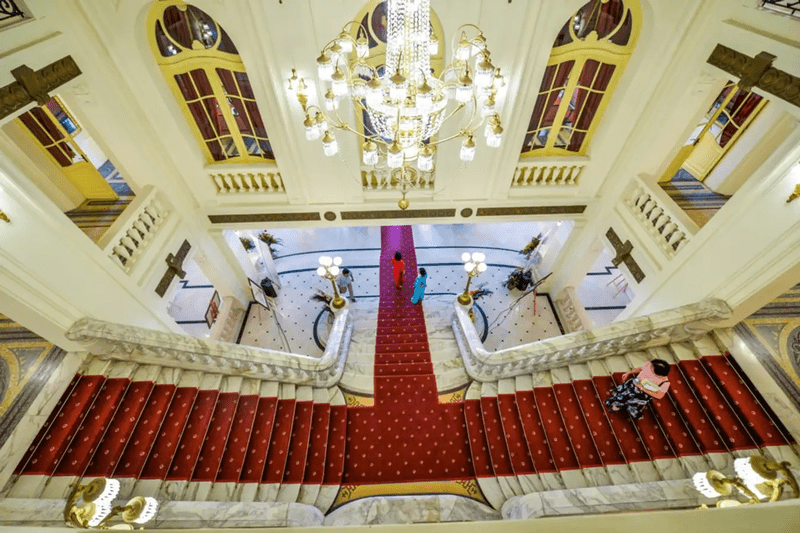
The Hanoi Opera House is one of the most outstanding examples of the architectural harmonization and cultural vitality of the capital. With its highly aesthetic value and significant historic role, a visit to this site is indispensable for tourists. So, if you enjoy architectural sweets, historical moles, or world-class performances, the Opera House will ensure the most unforgettable experiences.



